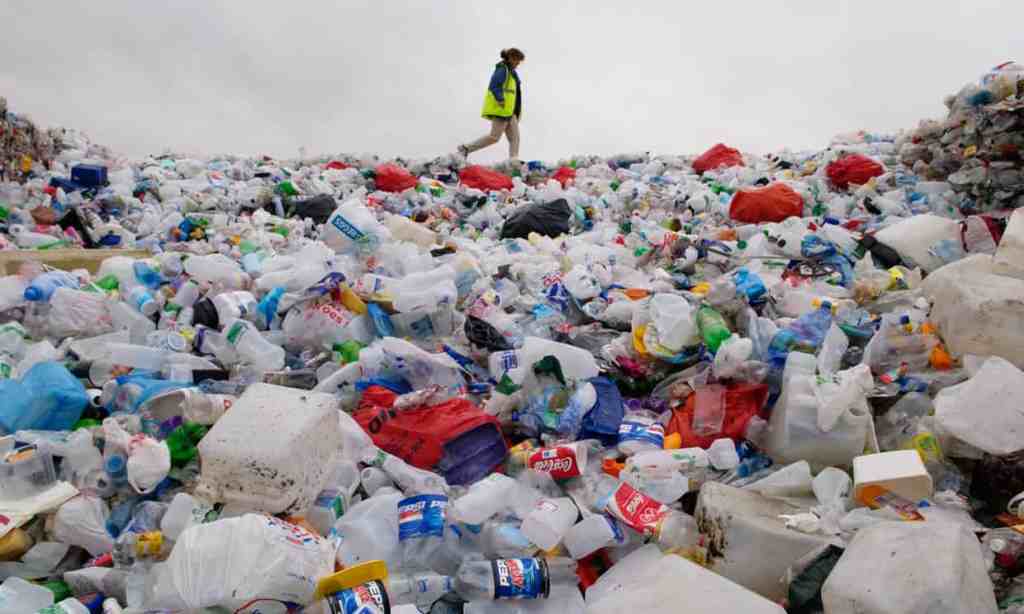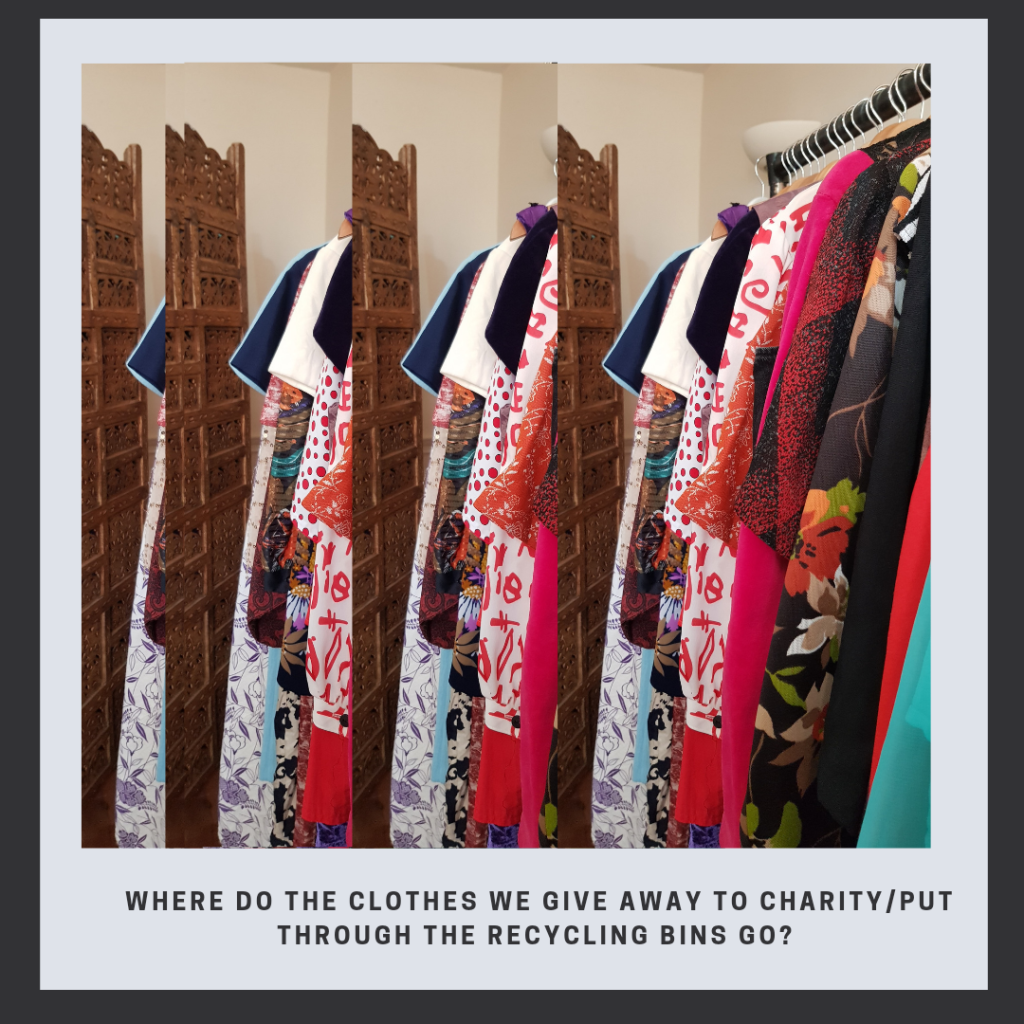It is a common misconception that the excess of clothes we donate to charity shops is given free to people in developing countries.
A vast network of traders is involved in the process (who make decent profits) before the clothes are sold in Africa’s retail stalls.
Even though exporting used clothes extends their life cycle, a considerable portion still ends up in a landfill.
The low-cost materials and constant supply of cheaply made clothes mean that consumers buy more (fast fashion) items than ever before.
According to thegoodtrade website, Fast Fashion “is a design, manufacturing, and marketing method focused on rapidly producing high volumes of clothing. Garment production utilizes trend replication and low-quality materials (like synthetic fabrics) to bring inexpensive styles to the public.
These cheaply made, trendy pieces have resulted in an industry-wide movement towards overwhelming amounts of consumption. Unfortunately, this results in harmful impacts on the environment, garment workers, and, ultimately, consumers’ wallets.

What is wrong with the used clothes trade
Because fast fashion clothing is of inferior quality, consumers tend to wear them little and dispose of them quickly.
Most of these unwanted clothing people put through the textile recycling bins or hand over to the charity shops end up in the local markets of developing countries.
At least 70% of donated garments end up in Africa, according to Oxfam.
Giant cargo ships deliver them to countries like West Africa and Ghana, but far too many clothes arrive in unwearable condition, filthy, and unrepairable.
Whilst undeniably, the second-hand clothing trade has contributed to creating new jobs, it is also why the local traders’ income shrinks day by day.
Impact of the used clothing trade
- The used garments are of very low quality and, therefore, much more difficult to sell.
- One bale of clothing may consist of up to 200 items, but only a small percentage are stain-free and in a condition good enough to be re-sold.
- The disposed garments end up in landfills and turn into a toxic hazard. Developing countries do not have the means to manage their waste effectively.
- The disposed garments decompose because of the hot and humid conditions and turn into mud which clogs the soil and destroys it.
- During monsoon season, the overflowing waste, including textiles, goes through the open storm drains and washes out into the ocean. The layers of textile waste clog the ocean floor and wipe out marine life. Our unwanted clothes end up in Africa’s seashores and rivers, creating an environmental catastrophe.
- In order to manage the inundated volume of waste, much of the unwanted clothing is burned. The burning fumes from the toxic dyes, synthetic fibres and other plastic material on the clothes (buttons etc.) pollute the air for days.
The impact on people’s quality of life and the environment is almost irreversible.
The socioeconomic impact of the second-hand clothing trade
Used clothing also creates a massive socioeconomic problem. African clothing industries and brands compete with the far lower retail prices of the second-hand garments market.
Cheaper imported garments flood the local markets, and as a result, workers in local factories lose their jobs.
This is why developing countries have started banning the import of second-hand clothing.
Europe and the United States oppose higher import taxes. Nevertheless, Eastern African countries are determined to grow their domestic textile industries and implement the second-hand clothing import ban.
How to create less textile waste
The second-hand clothes market prevents local development. It also forges a relationship of dependency between developing economies and the wealthiest countries of the North.
Consumers have the power to vote with their money.
- Shop from ethical brands that do not value profits over people and our planet.
- Try to avoid buying low price/quality items but buy better clothes and less often.
- Please educate yourself about where your clothes come from, who made them and where they go after you finish using them.
- Wear your clothes for longer, take good care of them, mend, alter & re-style them, swap with friends or rent.
Brands overproduce by at least 40%, promoting weekly trends, over consumerism and a throwaway culture to continue to grow their profits.
- The most important thing is to hold the brands we buy from accountable for their products end of life.
- When you want to dispose of a garment, send it back to them.
- Ask the brands to offer a take-back scheme. Many ethical brands offer this service because they reuse the textiles (circular economy) instead of constantly needing new materials (linear economy) that deplete the earth’s resources.
- Write to your favourite brands, ask them to make their clothes recyclable. This means they need to use fewer synthetic materials in production process.
Anything is better than making our second-hand clothing someone else’s problem.
We need to hold the brands we buy from accountable for their products end of life.


Find out more about ethical fashion and how to manage your clothes more sustainably.






You must be logged in to post a comment.